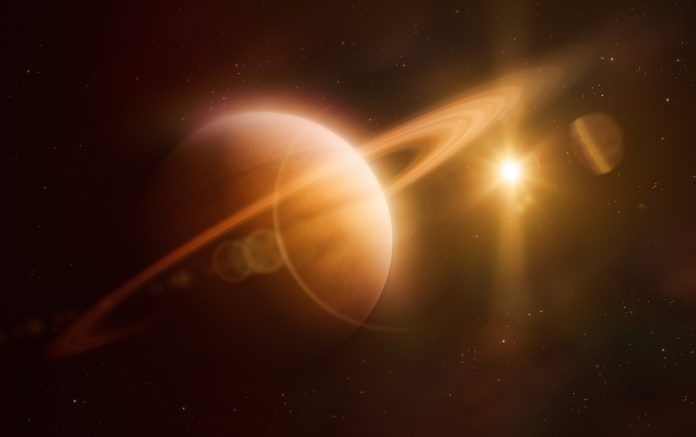Cornell University astronomers have looked into the planetary evolution of Io, Jupiter’s fiery moon known for its intense volcanic activity
This research highlights a crucial process in planetary formation called tidal heating.
What is tidal heating?
Tidal heating, driven by gravitational forces, is vital in shaping the evolution of celestial bodies. Io, caught in the gravitational tug-of-war with Jupiter and its moons, experiences immense tidal forces.
These forces cause Io to flex and stretch, generating significant internal heat. This heat powers Io’s volcanic activity, making it the most volcanically active body in our solar system.
Professor Alex Hayes explains, “Tidal heating plays an important role in the heating and orbital evolution of celestial bodies.” This insight is crucial for understanding how celestial bodies evolve and potentially harbour environments conducive to life.
Discoveries from Juno’s flybys
Using data from NASA’s Juno spacecraft, researchers discovered active volcanoes clustered around Io’s poles. These volcanoes play a vital role in regulating Io’s tidal heating processes.
Madeline Pettine, lead author and Cornell doctoral student notes, “Studying the inhospitable landscape of Io’s volcanoes actually inspires science to look for life.”
Key findings
- Io’s poles host a surprising concentration of active volcanoes compared to its equatorial regions.
- These volcanoes, such as Asis, Zal, Tonatiuh, and the notorious Loki, exhibit persistent activity and have been closely monitored through space missions and ground-based observations.
- The volcanic activity at Io’s poles appears synchronised, with eruptions affecting each other’s brightness and behaviour.
The study, recently published in Geophysical Research Letters, was supported by NASA’s New Frontiers Data Analysis Program and the New York Space Grant. It highlights Io as a natural laboratory for studying tidal heating and its broader implications for planetary science.
Understanding Io’s volcanic dynamics not only enhances our knowledge of planetary evolution but also fuels the ongoing search for life beyond Earth. As Pettine reflects, “They all got bright and then dim at a comparable pace,”
“It’s interesting to see volcanoes and see how they respond to each other.”
This research highlights the interplay between planetary bodies and their environments, offering a glimpse into the intricate mechanisms shaping our solar system and beyond.






